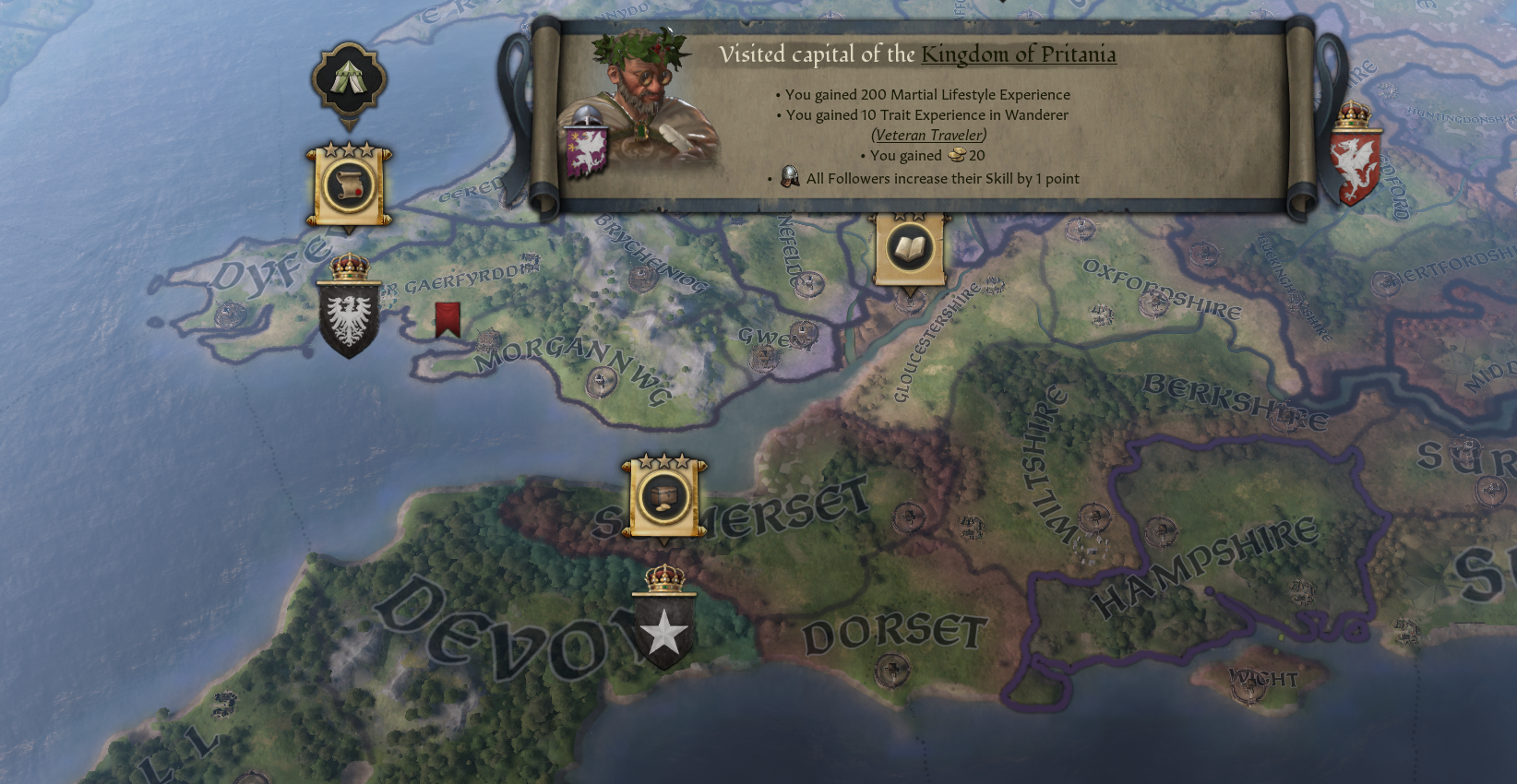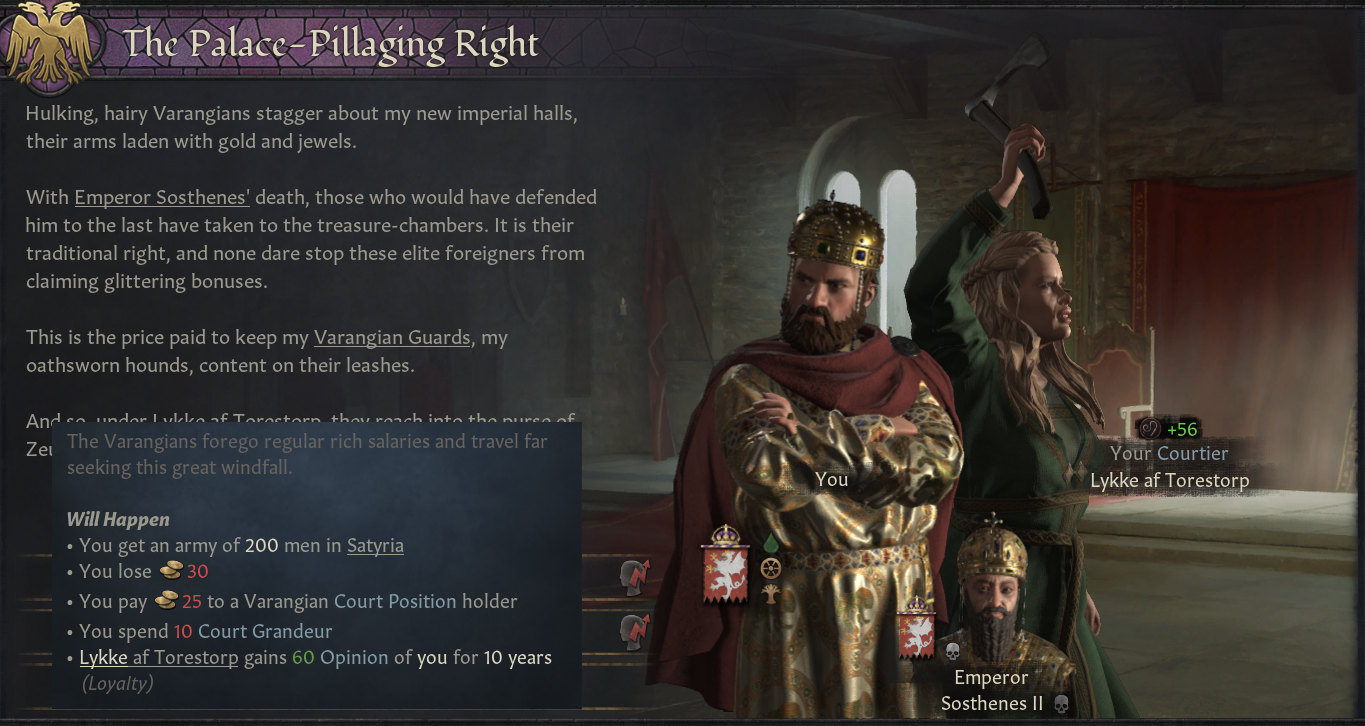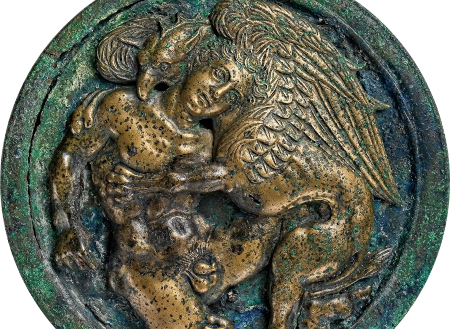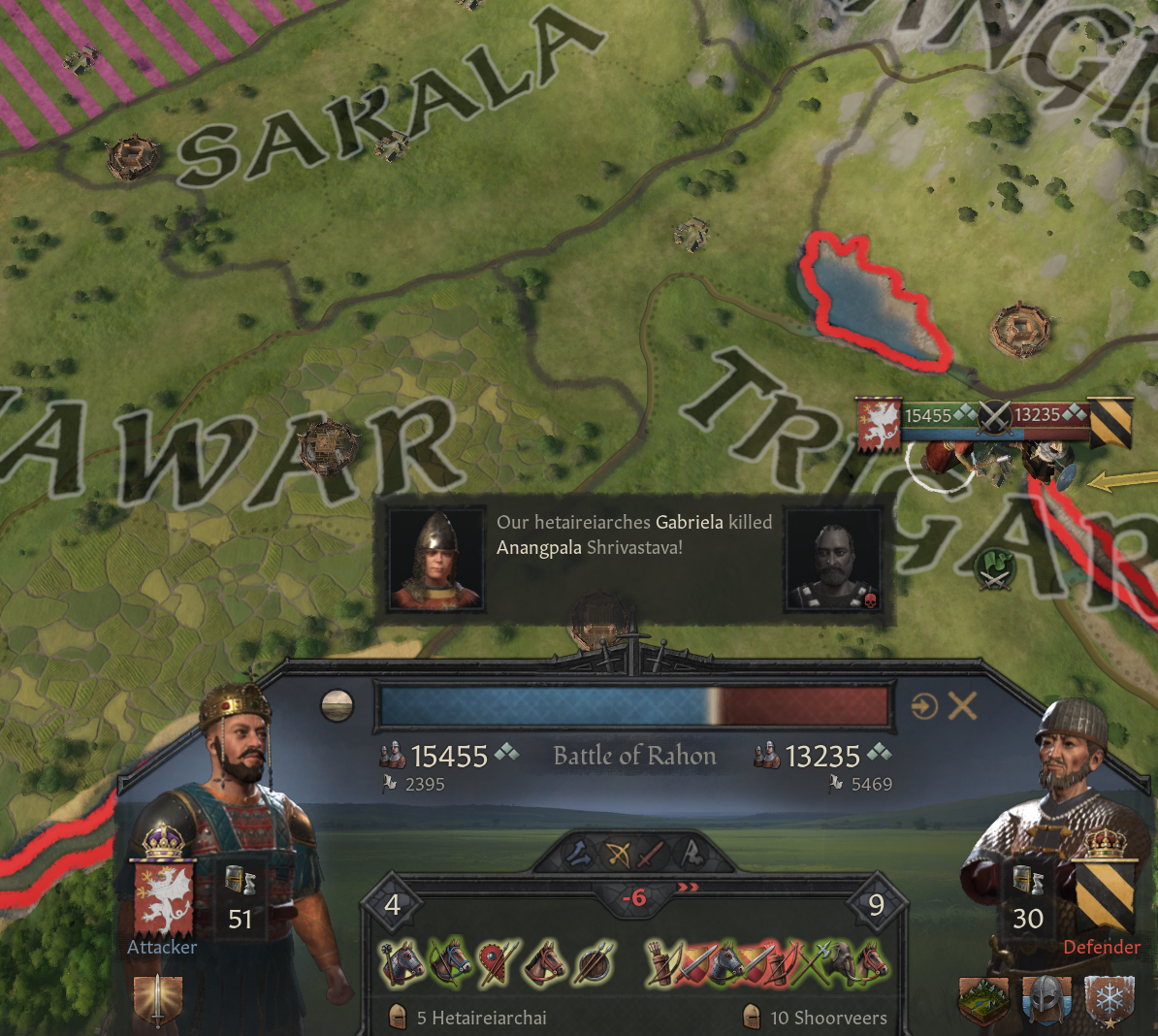Why is it that China always seems to collapse in Paradox games, instead of staying united?
I don't know why China is usually fragmented in paradox games. This state prevailed for a long time until the arrival of the Mongols.
Thank you for these further adventures of Satyros. He must have an amazing intellect and be quite skilled with linguistics given his success in these travels and his spy missions.
I am starting to think Satyros is one of the world's greatest travelers and adventurers ever. What a life! Thanks for the new chapter and congratulations on having this AAR recognized in the Weekly AAR Showcase.
He is astonishingly well travelled, and kept an actual journal throughout. He is going to be one of the most famous and important historical sources of all time.
I tried to travel as much of the world as possible during the life of one character. In any case, the last chapter VI will be the last one concerning the adventures of Satyros Satyrion, after that I returned to regular chapters concerning the successive rulers of the Tauric Empire.
- 2
- 1















































































































































































